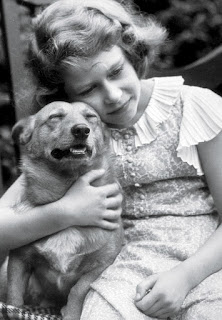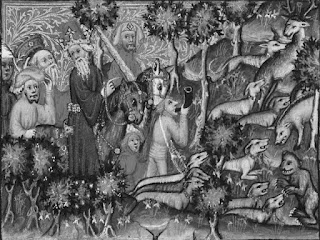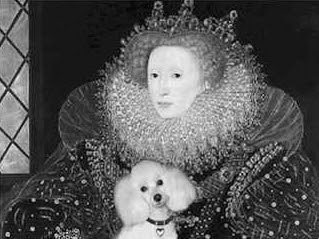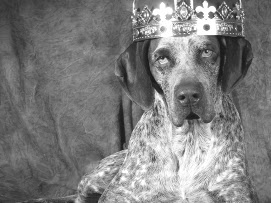Joy, a spaniel and beloved pet to the son of Nikolai II Alexandrovich Romanov (the last Emperor of Russia), was the sole survivor of the Imperial family.
 |
| One of many photos taken of Alexei and Joy. |
On July 17, 1918 Tsar Nikolai II, his empress Alexandra, their four daughters Olga, Tatiana, Maria & Anastasia, and their only son Alexei were executed by Bolshevik revolutionaries in the basement of their home in Yekaterinburg. Their personal physician, their three servants and two of the family's dogs, Ortino & Jemmy, were also killed. It is believed that, having been spooked by the gunshots, their other dog Joy escaped from the house into the woods.
Alexei, who was only 13 at the time of his death, was born with hemophilia - a medical condition in which the blood doesn't clot properly, causing the person to bleed severely from even a slight injury. Because of this, he was often prevented from playing with other children so he spent much of his time with his faithful dog Joy.
Eight days after the execution, the Bolsheviks had to withdraw as White forces entered the city. Joy (saddened, half-starved and almost completely blind) was found wandering the grounds of the house. Colonel Pavel Rodzianko, who was serving with the British Expeditionary Force and knew the Romanov family well, took Joy to England where the dog spent the last years of his life in comfort in his new home at Sefton Lawn, nearby Windsor Castle - where Nikolai had hoped his cousin King George V would have provided a safe haven for him and his family.
Joy was buried in the garden at Sefton Lawn, and according to Rodzianko, "Every time I pass my garden at Windsor I think of the small dog's tomb in the bushes with the ironical inscription 'Here lies Joy'. To me that little stone marks the end of an empire and a way of life"






















